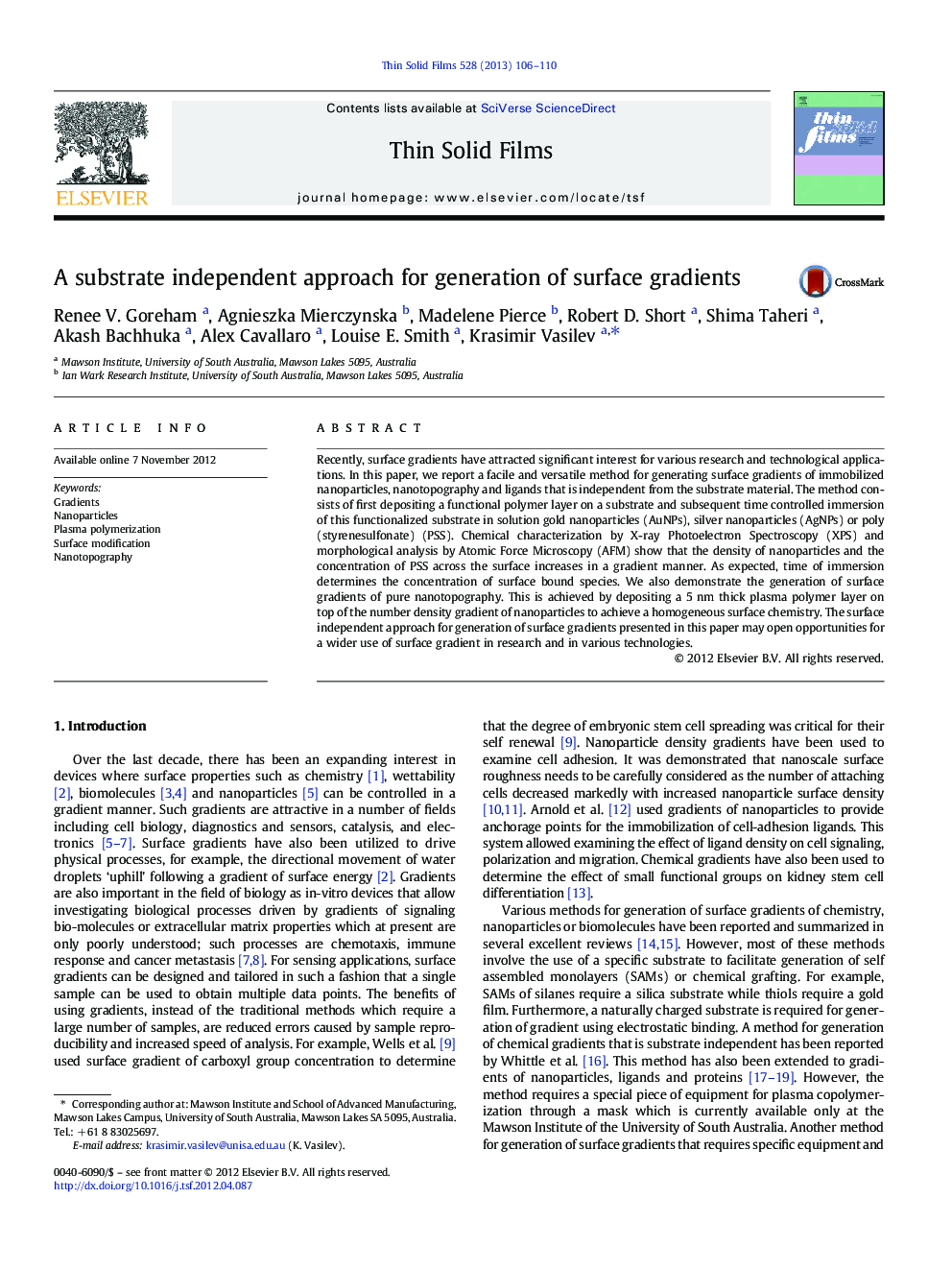| Article ID | Journal | Published Year | Pages | File Type |
|---|---|---|---|---|
| 1666882 | Thin Solid Films | 2013 | 5 Pages |
Recently, surface gradients have attracted significant interest for various research and technological applications. In this paper, we report a facile and versatile method for generating surface gradients of immobilized nanoparticles, nanotopography and ligands that is independent from the substrate material. The method consists of first depositing a functional polymer layer on a substrate and subsequent time controlled immersion of this functionalized substrate in solution gold nanoparticles (AuNPs), silver nanoparticles (AgNPs) or poly (styrenesulfonate) (PSS). Chemical characterization by X-ray Photoelectron Spectroscopy (XPS) and morphological analysis by Atomic Force Microscopy (AFM) show that the density of nanoparticles and the concentration of PSS across the surface increases in a gradient manner. As expected, time of immersion determines the concentration of surface bound species. We also demonstrate the generation of surface gradients of pure nanotopography. This is achieved by depositing a 5 nm thick plasma polymer layer on top of the number density gradient of nanoparticles to achieve a homogeneous surface chemistry. The surface independent approach for generation of surface gradients presented in this paper may open opportunities for a wider use of surface gradient in research and in various technologies.
► We present a substrate independent approach for generation of surface gradients. ► We demonstrate well-defined density gradients of gold and silver nanoparticles. ► We provide an example of pure surface nanotopography gradients. ► We demonstrate concentration gradients of bound ligands.
